
By Diane M Watters
In 2018, Scotland commemorated 100 years of local authority-run Catholic schooling since the 1918 Education Act. Following the act, both the Catholic and Episcopalian churches transferred their own church-run schools, known as ‘voluntary’ schools, into public control. Historians recognise the profound transformation of Catholic education following the Act, but what of the school buildings? Were they similarly transformed? Was there a distinctive preexisting Catholic school architecture which endured, or was it simply abandoned under state control?
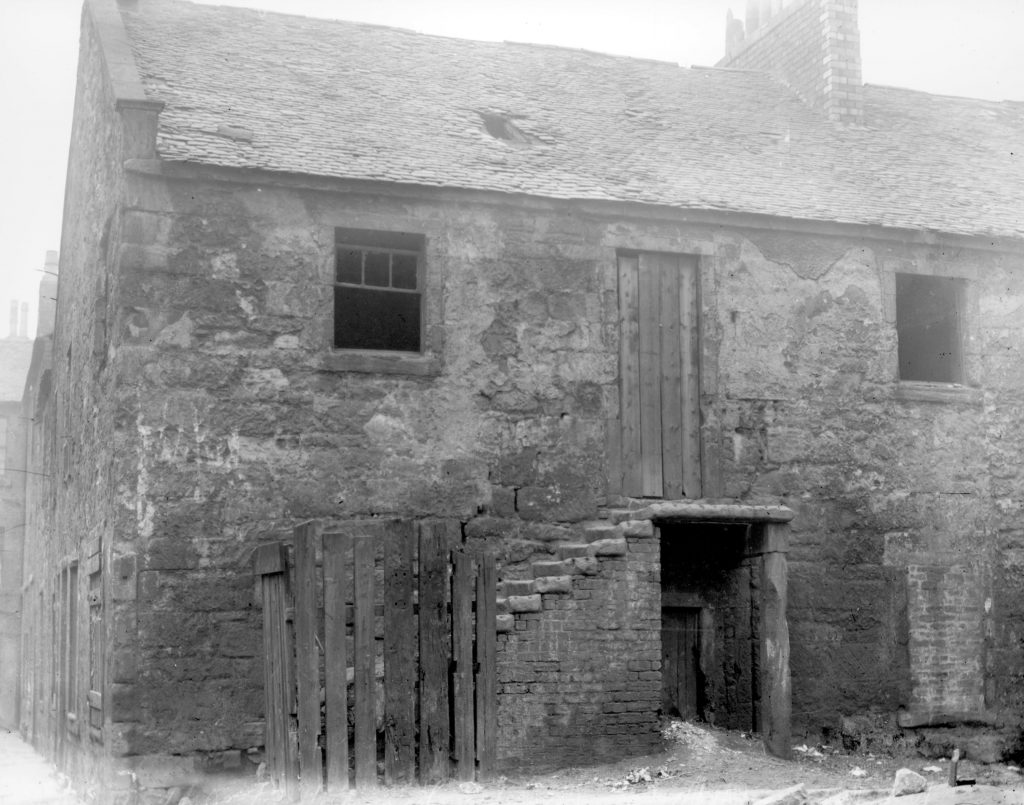
© CSG CIC Glasgow Museums and Libraries Collection: The Mitchell Library, Special Collections
The transfer of ownership of school buildings, arguably the dominant financial concern of the Church hierarchy prior to 1918 (teaching costs aside), became a key stumbling block in the negotiations between Church and state. Catholic school buildings were to be sold or leased to the local authority. Compensation was offered to the Church – unlike the 1872 Education Act. Despite this pivotal role in 1918 negotiations, the places of Catholic schooling, which included premises adapted for educational use, temporary buildings, and purpose-built school buildings, has attracted no historical overview by architectural historians, to date.
Catholic School Patronage
The architectural history and nature of Scotland’s Catholic school building is defined chiefly by its patronage, and divides into three chronological periods: the post-penal ‘revival’ of Catholic schooling in the early decades of the nineteenth century up to 1872; secondly, the ‘voluntary’ school era post-1872, when the Church declined to transfer its control of schools to the newly-formed school boards and now received government grants for the running of schools – but no funds for buildings or upkeep; and finally, the post-1918 period of ‘public’ and comprehensive schooling, which continues today. In terms of school building, the Church and catholic community funded and built the schools in the first two periods; after 1918, responsibility to build lay with the local authorities and state.

© CSG CIC Glasgow Museums and Libraries Collection: The Mitchell Library, Special Collections
What characterised Catholic school buildings in these different periods?
Catholic school buildings developed from a low base in post-penal Scotland. The schools began in temporary accommodation, and most had a makeshift and nomadic early existence. Although rare, bespoke schools were built from around 1817 onwards. Purpose-built dual Chapel-schools, were a common solution for early urban mission parishes. These were either demolished for the new permanent chapel on the same site, or re-utilised solely for schooling until a new school could be built. Visual records of these early chapel-schools are rare, due to their temporary nature. Church ownership of school buildings and land (previously restricted), and the avoidance of state intervention, was important. Catholic schools relied heavily on their community’s charity for finance (impressive given the poverty of immigrant parishioners). The Church had a smaller group of wealthy benefactors than other denominational schools enjoyed.

Scottish Catholic Historical Collection
Catholic school buildings of this period initially adhered to mainstream architectural styles – normally a simple neo-classical style. But favoured Catholic neo-revivalist styles, such as Gothic, began to emerge from the 1850s onwards. By the 1840s, when purpose-built Catholic school building increased, some high-status Catholic architects who had previously designed new mission chapels, designed the new schools. There were also amateur-architect priests designing early churches and schools. Catholic school design patterns emerged: the school adjacent to the chapel was a much sought-after Catholic ideal, particularly in small towns. The neo-Romanesque style was favoured in the ambitious school complexes in Dumfries and Dundee. An ‘ideal’ but not popular quasi-ecclesiastical neo-Gothic was adopted in the 1850s, but a simpler secular Scottish-inspired neo-Gothic was also introduced: it became the dominant architectural style for many new post-1872 elementary Catholic schools in Glasgow and the West. The most distinctive emerging Catholic secondary school building type in the 1850s was the domestic house-boarding school or convent (which contrasted starkly with Scotland’s longstanding public grammar day schools).
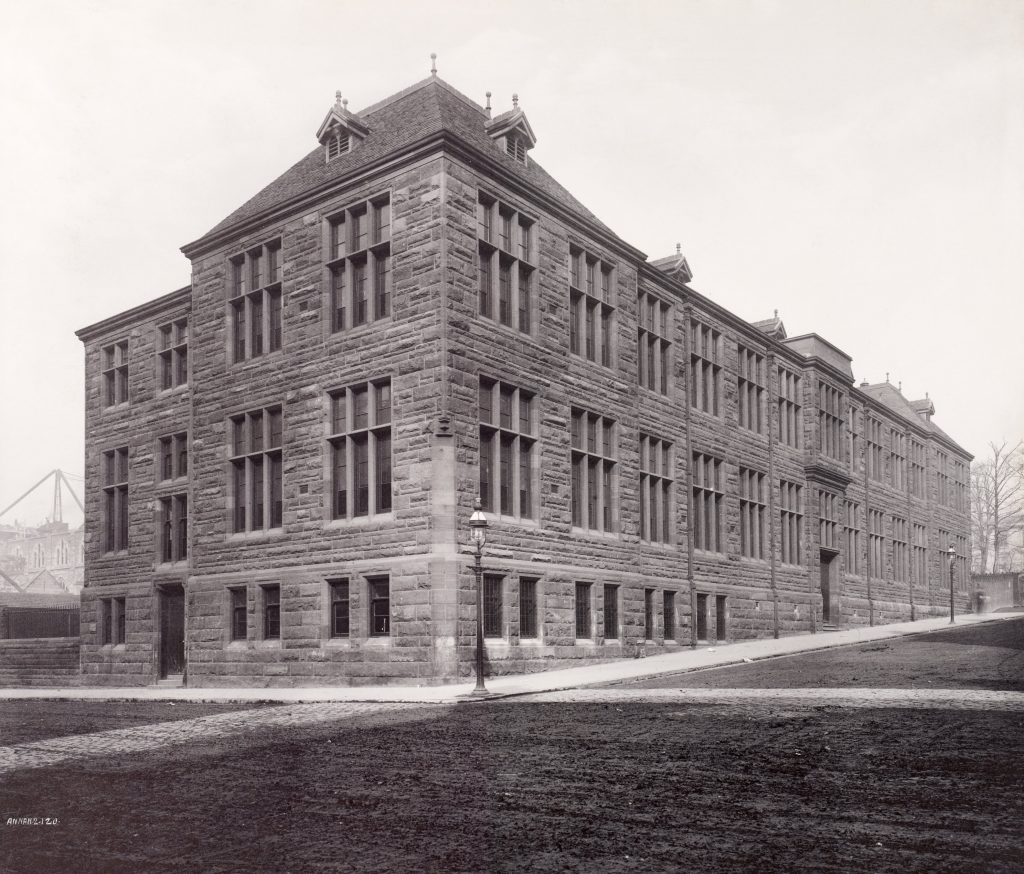
Courtesy of HES, Archdiocesan Curial Office
In the voluntary era urban Catholic school architecture, adapted or new-built, differed from Victorian board schools. In the large Glasgow archdiocese, there was an impressive grouping designed by several recognised Catholic architects in the 1890s. These urban schools were several storeys high, frequently dark red sandstone to harmonise with the same architects’ Catholic churches. School building in the east was less architecturally ambitious, and in Edinburgh, villas and terraced houses were adapted and extended to provide the catholic secondary schools. By the turn of the century there was a programme of replacing and extending ‘old’ Catholic school buildings. New demands on the design and functionality of school buildings advanced considerably, and by 1904 the Archdiocese of Glasgow’s finance board had its own list of seven approved architects.

© Courtesy of HES
By 1918, Catholic school buildings were reportedly ‘crumbling’ and the Church was struggling to maintain them. After a slow start following the 1918 Act, and long periods again in temporary buildings, urban Catholic schools were provided with new buildings. The Church itself was freed from the heavy financial burden of school building patronage by 1930. New interwar Catholic schools remained stylistically traditional – again adopting simplified variants of classicism, or a more modern art-deco. The distinctiveness of Catholic school architecture was still present, but in decline. The planning and educational objectives of schools in the interwar were clearly modern and progressive compared to the ‘voluntary era’. Change did not come from radical curriculum reform – only gradual change was made. It was the continued open-air health and hygiene agenda which dominated.
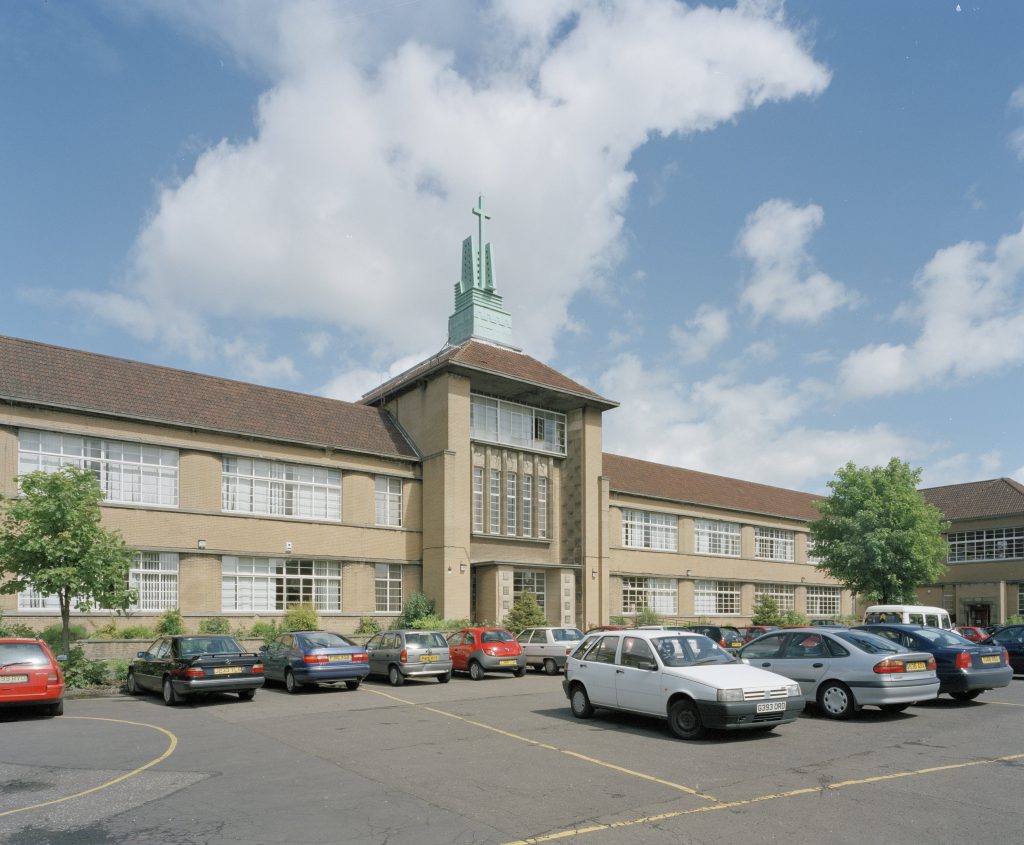
© Crown Copyright: Historic Environment Scotland
By the 1940s new Catholic schools became increasingly indistinguishable from other schools. It had abandoned historic styles for the Modern Movement design in the late 1950s. Many of the interwar schools were replaced with new Modernist comprehensive schools in the late 1960s and 70s, and it became almost impossible to tell Catholic school architecture apart from non-denominational. Since the late 1990s, a programme of demolition and replacement of the 1960s Catholic and non-denominational state schools began, financed initially through Public Private Initiatives in the 1990s, and more recently under Scottish Futures Trust from 2008.
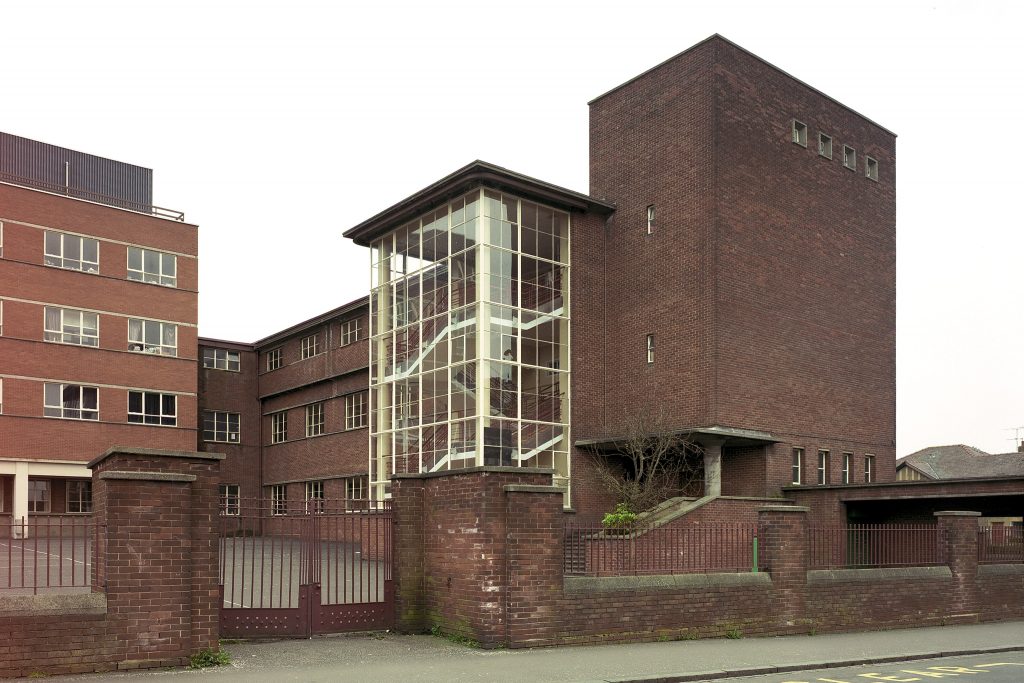
© Crown Copyright: Historic Environment Scotland
Despite ongoing demolition and replacement of school buildings (a common pattern in Scottish history since the seventeenth century onwards), we can identify a characteristic Catholic school architecture in Scotland, and much of its heritage survives today for the communities it served to celebrate.

© Crown Copyright: Historic Environment Scotland
Diane M Watters is an architectural historian at Historic Environment Scotland, and teaches at the University of Edinburgh. On behalf of HES she presented a paper on Catholic school architecture at the 2018 symposium organised by the Scottish Catholic Historical Association. Her paper ‘Our Catholic school’: Themes and Patterns in Early Catholic School Buildings and Architecture before 1872‘ in The Innes Review, The Journal of Scottish Catholic History, Volume 79, Issue 1, 2020, stems from that initial research.


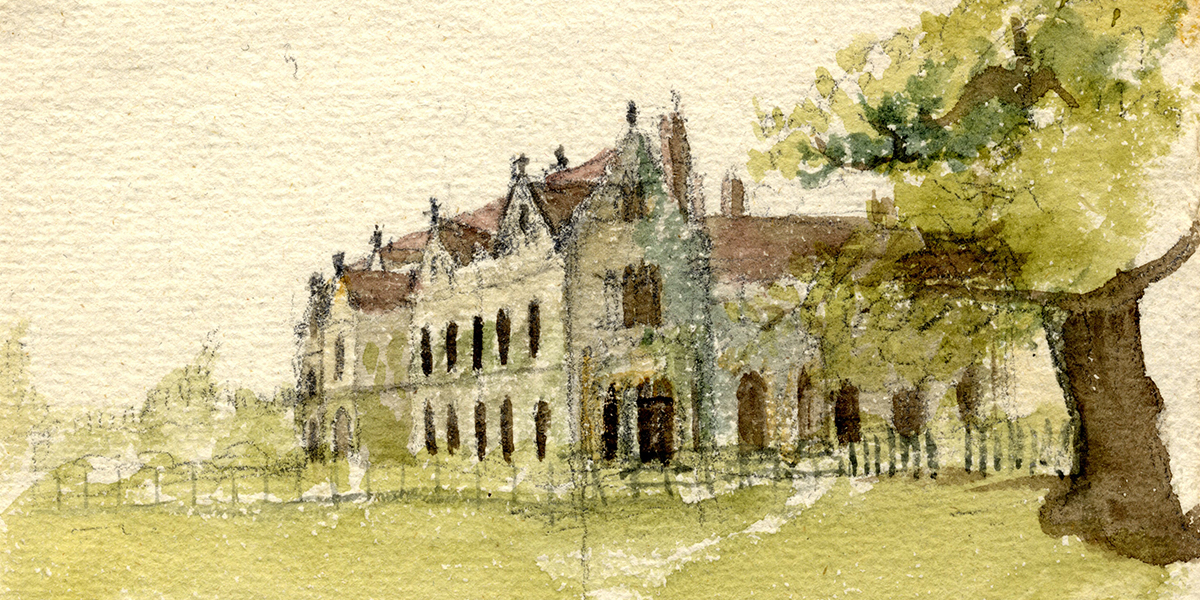
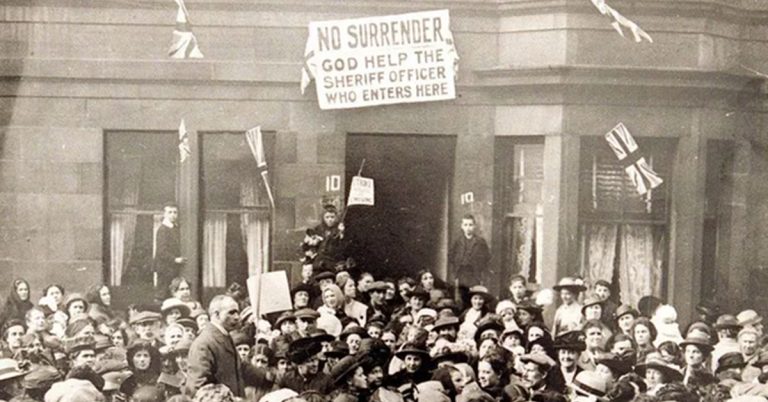
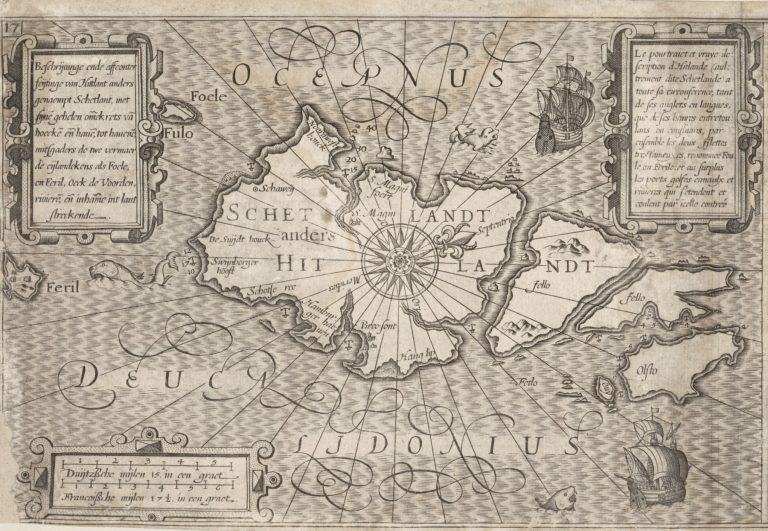

Interesting article but shame it doesn’t mention St John’s Primary School in Portobello, what appears to have been the first Catholic school built as a consequence of the 1918 Education Act. Unfortunately, that claim to fame didn’t stop a handsome and perfectly serviceable building being demolished by Edinburgh Council in 2018 after Historic Scotland refused to list it, thwarting the efforts of local campaigners wanting to re-use it. The site is now a rather dull park.